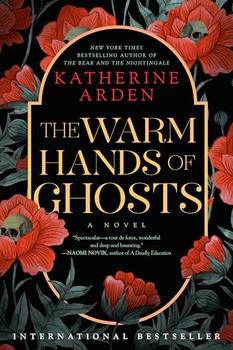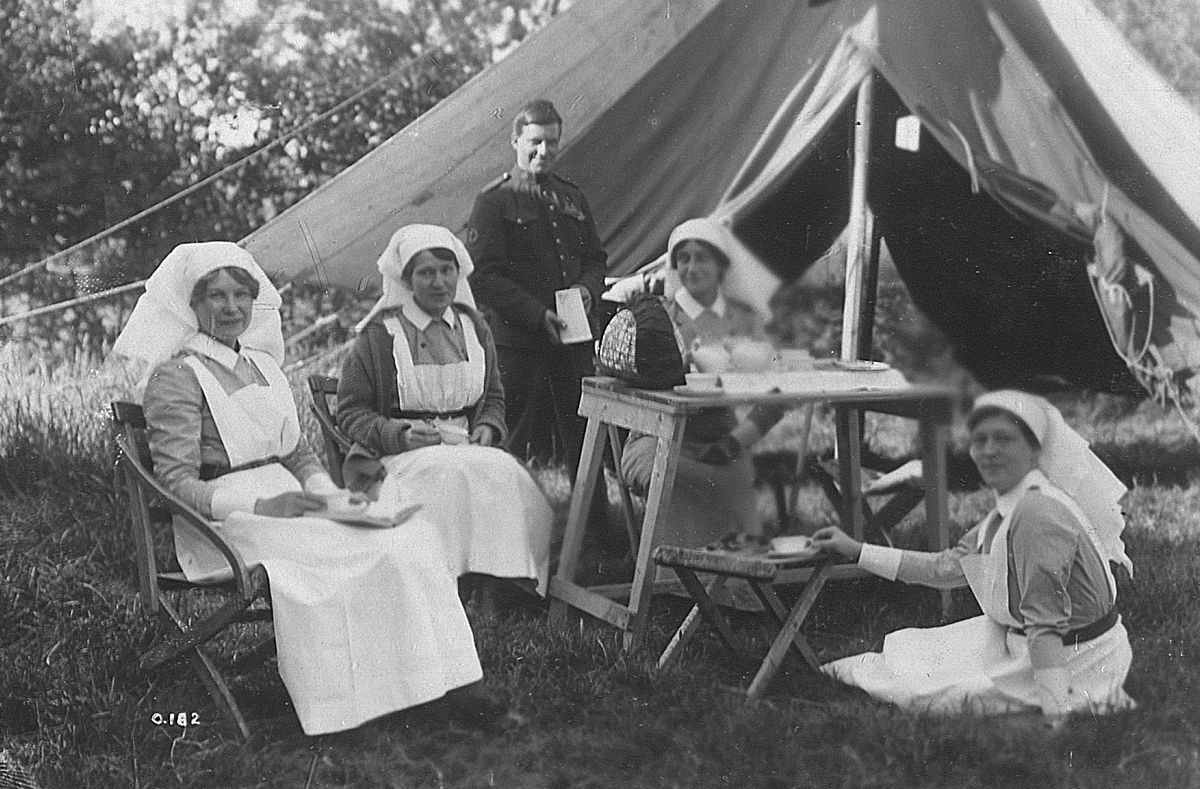Summary | Excerpt | Reviews | Beyond the Book | Read-Alikes | Genres & Themes | Author Bio

A Novel
by Katherine ArdenThis article relates to The Warm Hands of Ghosts
 Katherine Arden's The Warm Hands of Ghosts, in addition to focusing on the violence and trauma of the World War I trenches, is also about the female nurses who treated wounded soldiers.
Katherine Arden's The Warm Hands of Ghosts, in addition to focusing on the violence and trauma of the World War I trenches, is also about the female nurses who treated wounded soldiers.
Protagonist Laura's point-of-view sections devote ample description to the sordid day-to-day of serving as a hospital nurse in WWI. Already sent away from the front once for a bomb that nearly took her leg, she is steely and cynical and, like the other nurses, adopts several coping mechanisms: alcohol, smoking, ducking for cover at the first sign of a bombing, and sleeping without dreaming.
During WWI, as many as 3,000 Canadian nurses in the Canadian Army Medical Corps served with 600,000 men in the Canadian Expeditionary Force. These women — of whom Laura is a fictionalized depiction — were called nursing sisters. In her novel, Arden includes the details of Laura, without her parents' support, having to pay her way through a nursing degree. Official nursing training (which eliminated non-white women because they were institutionally barred), British citizenship, "high moral character," physical fitness, and being between 21 and 38 years old were all part of the requirements for becoming a Canadian nursing sister. For their field uniforms consisting of blue dresses and white veils, these nurses were also nicknamed "bluebirds."
While the Canadian nursing sisters and their counterparts from other countries were usually not stationed directly in the trenches — they were set up at first in hospitals and eventually Casualty Clearing Stations, the first point for receiving the wounded from ambulances and administering treatment — they were not sheltered from the horrors of war. Because of their proximity to the front, nurses were at high risk for air raids and shell fire and were exposed to rats and fleas. Even hospitals that were farther away were not completely safe. On May 31, 1918, German bombers attempted to destroy a bridge near the No. 7 Canadian General Hospital at Étaples in northern France, and several doctors and nurses were killed as a result. Nurses stationed on hospital ships also faced the risk of German U-boat torpedoing. Arden incorporates these harrowing realities into her fiction, in part through Laura's persisting leg injury.
Serving as a wartime nurse, especially in WWI, was physically and psychologically taxing. Brian Tennyson, a military history professor at Cape Breton University, explains, "If you're in a hospital in France, things might be relatively quiet for a while, but then there'd be a big offensive, there'd be a big battle and they knew within hours, 24 hours or maybe even less, there would be a whole whack of injured people showing up." In a 1980 interview, now-deceased nursing sister Helen Kendall talked about how because doctors were so busy, nurses like herself often had to be the ones administering anesthetics — "But they [the patients] were the devil to give anesthetics to … They could fight like thieves."
Despite these hardships, written records kept by WWI nurses reveal the poignant bonds that grew between them and the men they treated. In a September 1917 diary entry, Helen Dore Boylston of the American first Harvard Unit recounts the tender experience of treating "a Canadian, about twenty-two, with a frightful arm; elbow joint smashed, and the whole arm stiff and swollen, and full of gas gangrene." The moment is mutually compassionate: "Once, accidentally touching a bare nerve-end with my forceps, I hurt him terribly and he turned his head to see what I was doing. I saw that his eyes were full of tears and the pupils enormously dilated with pain. But not a word out of him … Just patient silence. I choked for an instant, and then burst out, 'Oh, I'm awfully sorry, lad! I didn't want to hurt you.' And he said, so gently, 'It's quite all right, sister. Carry on.'" One could perhaps imagine a similar interchange shared between Arden's fictional Canadian brother and sister pair, tough nurse Laura and her younger brother Freddie.
A group of Canadian nurses having tea at No. 3 Casualty Clearing Station in France, July 1916
British Library/Picturing Canada via Wikimedia Commons
Filed under People, Eras & Events
![]() This "beyond the book article" relates to The Warm Hands of Ghosts. It originally ran in March 2024 and has been updated for the
January 2025 paperback edition.
Go to magazine.
This "beyond the book article" relates to The Warm Hands of Ghosts. It originally ran in March 2024 and has been updated for the
January 2025 paperback edition.
Go to magazine.
Being slightly paranoid is like being slightly pregnant – it tends to get worse.
Click Here to find out who said this, as well as discovering other famous literary quotes!
Your guide toexceptional books
BookBrowse seeks out and recommends the best in contemporary fiction and nonfiction—books that not only engage and entertain but also deepen our understanding of ourselves and the world around us.